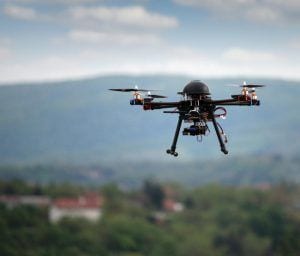The commercial application of drones is increasing. Drones are being used to fight forest fires, for commercial agriculture, and to deliver medical supplies to remote areas.
Insurance companies are also increasingly using drones, which can be useful for capturing evidence during the claims process. However, there are plenty of pitfalls in using drones, including the admissibility of evidence during litigation. Further, the legal landscape for drones is changing all the time. The States and the Federal Aviation Administration (“FAA”) are rapidly issuing new laws and regulations.
In the likely event that you come across the use of a drone in an insurance claim, here are ten things to consider in order to anticipate and respond to potential issues.
- Drones are helpful for investigating accidents, mapping debris fields, and preserving evidence at the scene of a loss because of their ability to capture images from a birds-eye-view that are not readily visible from the ground.
- Drones can carry more than just cameras. They also carry sensors to measure distance, heat, radiation, sound, and light.
- Drones can be easily deployed in the field. Modern drones are compact enough that they can fit into a camera bag.
- Both personal and commercial drone use are regulated by the FAA.
- Evidence obtained from drones used in violation of FAA rules and regulations may not be admissible in court.
- Several states, including Maryland, Texas, Delaware, California, and Florida, have specific laws about the use and admissibility of evidence obtained by drones.
- When evaluating the admissibility of evidence, consider that there are greater restrictions on the commercial use of drones, including the regulations set out in 14 C.F.R. § 107 et seq.
- Even the incidental use of a drone for a commercial purpose, such as inspecting the roof of a business, can be subject to the commercial drone-use regulations.
- Some restrictions to keep in mind when considering the admissibility of evidence obtained from a drone is that drones cannot fly over people (including sporting events), must fly below 400 feet, cannot fly in restricted airspace, and must remain within the sight of the pilot.
- Additionally, commercial drone pilots must be licensed, although personal drone pilots generally do not have to be.
Justin Fine is an Associate in the firm’s General Litigation Group where he focuses his practice on insurance defense and coverage matters. Justin graduated magna cum laude from the University of Baltimore School of Law in 2011. While in law school, Justin was the Editor in Chief for the Law Review. He was also awarded the Dean’s Citation for exceptional service to the law school community. Justin can be contacted at 410-740-3144 or jfine@pklaw.com.

 By: Justin Fine, Esquire
By: Justin Fine, Esquire 









